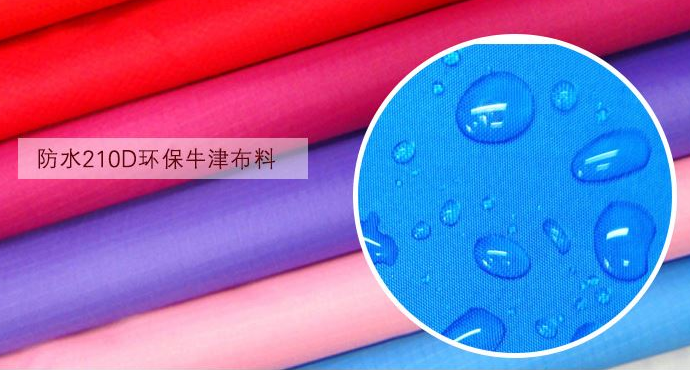Eco-friendly Oxford cloth is divided into two types, one is TPU Oxford cloth and the other is TPE Oxford cloth.
TPU Oxford cloth can change the original calendering process without any solvent. It directly uses TPU particles to be heated into liquid and coated on the knitted fabric. On cloth, non-woven fabrics and microfibers, breathable and semi-breathable effects can be achieved through coating density and special treatment. In addition, TPU also has wear resistance, tensile strength and flame retardant functions, so it is often used to make materials such as leather shoes and car interiors.
The appearance of TPE Oxford cloth is very similar to PVC, and it is also soft and elastic. It does not contain heavy metals and carcinogens, so it is energy-saving. An important product for the environment. TPE also has excellent properties such as high elasticity, high strength, softness, weather resistance and fatigue resistance. Because it is safe, environmentally friendly and has a wide range of uses, it is a new fabric suitable for all ages.

Waterproof 210D environmentally friendly Oxford cloth. The fabric is 210D Oxford cloth. After high-standard environmentally friendly dyeing and environmentally friendly PU coating, it meets the EU REACH (15 substances of high concern) environmental protection Standards and new U.S. environmental standards, including phthalate (6P), lead (Pb), polycyclic aromatic hydrocarbons, nonylphene, etc., can all be tested by third-party authoritative testing agencies such as SGS. At the same time, the fabric has good tensile strength and tear strength and is mainly used for backpacks, shopping bags, travel bags, etc. The fabric can also be subjected to deep processing such as printing, embossing, PVC calendering, and PU/PA coating.
Textile Oxford cloth is of high quality, not easy to deform, fade, wear-resistant, and has good waterproof properties. It is more commonly used in mid-to-high-end fashion casual shoes , all kinds of outdoor bags, tents, etc. </p






